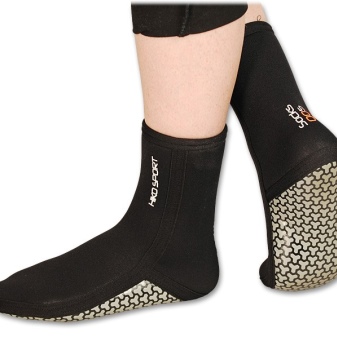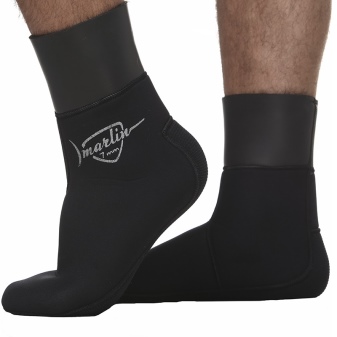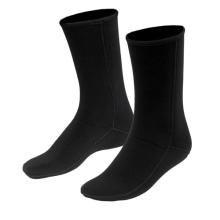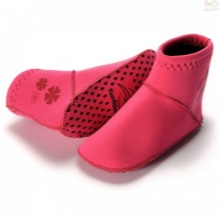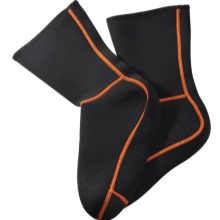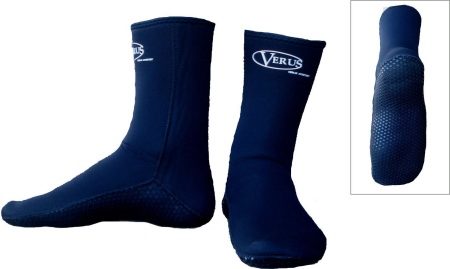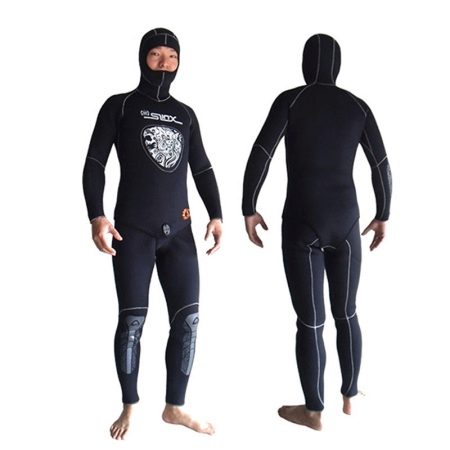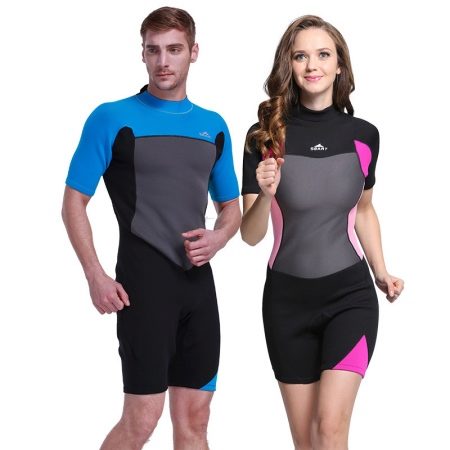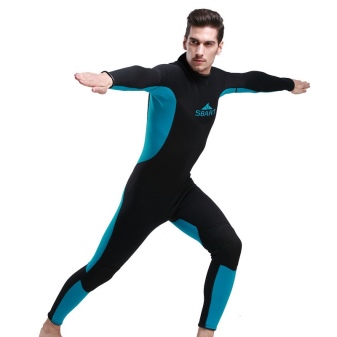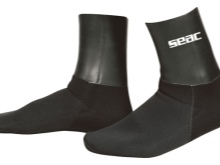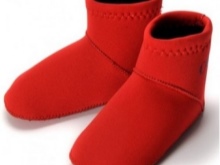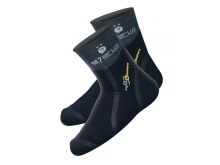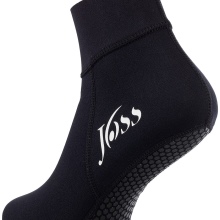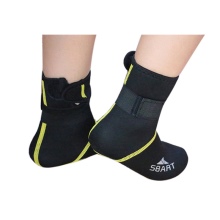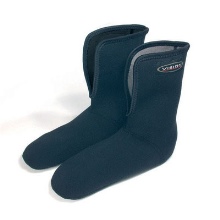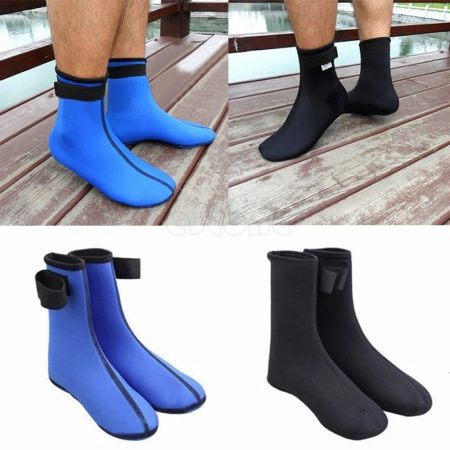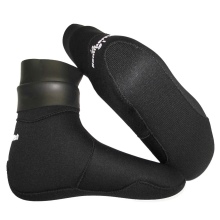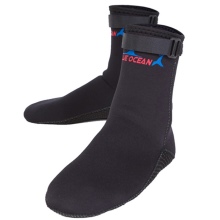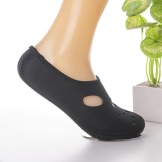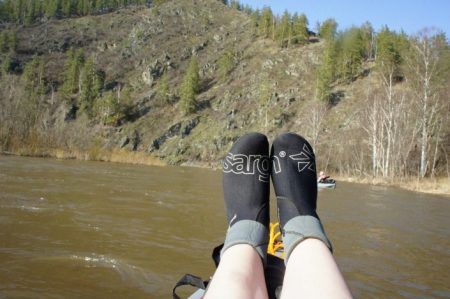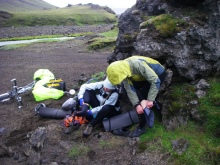Neoprene socks

How to keep your feet warm in the autumn hike or while diving? Neoprene socks - one of the great options, which fell in love with many lovers of outdoor recreation.
What it is
Neoprene is a relatively new material on the market. But he has already gained popularity in many industries due to his unique properties.
The material was created by DuPont. Originally, her trademark was so called. Then the name began to be applied to the material itself, which is now used by many manufacturers.
Neoprene is a type of synthetic rubber. The material is highly elastic and durable. In addition, it is resistant to temperature changes, exposure to ultraviolet radiation and petroleum products.
In addition to use as a variety of coatings, sound and noise insulation, the material has been used in the manufacture of clothing. Most often from it sew suits for diving and spearfishing.
The most important characteristics of neoprene - a high level of water resistance, excellent thermal insulation and stretchability. It is because of them, the material was used for tourist equipment and wetsuits. An alternative to it has not yet been found.
The manufacture of the material occurs by "foaming" rubber. Due to this, it becomes saturated with many small bubbles formed. They contain air that retains heat and prevents its loss.
Often, on one side, the material looks porous and soft, like a sponge. The other side is smooth and slippery. Due to this, the material is tight to the skin, which prevents the formation of voids.
The material absorbs water and by using the heat of the human body, heats it to the optimum temperature. Thus, a person in a diving suit under water will be warm and comfortable. Also, the material does not hinder movement due to its softness and flexibility.
Neoprene is of different thickness. The color scheme is no different. Usually it is black. Sometimes gray or brown.
Does neoprene have significant flaws? One is. The material does not allow air and does not allow the body to "breathe." For being under water this does not matter much, but for tourist equipment, vapor permeability is important. Namely, in the equipment for hiking and fishing, the material has found its second domestic use.
However, the only major drawback is overlapped by the many advantages of the material, and products made from it are very successful. First of all, it is socks. After all, keep your feet warm in high humidity is extremely important for human health.
Features
Neoprene socks - one of the latest inventions, which was appreciated by many outdoor enthusiasts.
Socks made of neoprene tightly fit the leg, not letting in the dirt, small stones and debris. But most importantly - they protect the feet from high humidity.
Undoubtedly, socks will not replace rubber boots or other waterproof footwear. If you wear them under ordinary sneakers and go into the river, your feet get wet.
So what's the point? The fact is that often shoes that do not leak moisture can be heavy and bulky. Of course, if fishing is planned on a rainy day, rubber boots would be the best solution. But if the weather is dry, and contact with water is infrequent (the grass is soaked from a sudden little rain, or there is a need to go into the river to wash dishes), socks will be an excellent solution.
An insignificant amount of moisture can keep socks, keeping your feet completely dry. If ingested with large amounts of water, they may get wet.But in any case, the legs will remain warm, which is an important advantage of this invention.
Tourists often take socks with them on a camping trip for emergencies. They almost do not occupy space in the backpack and allow you to move around in light comfortable shoes without worrying about unexpected contact with water.
As for fishermen, many recommend combining neoprene socks with rubber boots. Fishing often have to go into the water. Boots will protect feet from getting wet, but if the water is cold, discomfort cannot be avoided. And here come to the aid of miracle socks, maintaining the optimum temperature level inside the shoe.
And even if water gets into the boot, socks made of neoprene will come in handy. And to remove and dry them in the open air is not difficult.
Socks are not recommended only for long socks. Due to the snug fit and vapor tightness, the material may slightly irritate the skin.
Neoprene socks are produced by many firms. Usually they are divided by size. Also, depending on the needs, you can choose high socks, or a low model. Often the products have a special relief non-slip platform.
Reviews
Judging by the reviews, neoprene socks are a useful and practical purchase.
Tourists say that socks are very comfortable when rafting down mountain rivers. Thanks to the anti-slip coating of many models, you can be in the boat only in one sock, hiding shoes in a waterproof bag. The legs do not freeze at all, even when water gets on them.
An excellent solution to the socks are in the campaigns with areas of marshland. In this case, you can go light without wearing rubber boots. At the same time the legs will remain dry and warm.
Experienced people also recommend neoprene socks for autumn and winter fishing.
Many tourists believe that such socks are needed in any campaign, because even in summer it may be necessary to wade a cool river, and a neoprene product, worn under sandals, will protect the feet from overcooling.
Judging by the reviews, socks are easy to put on, they perfectly fit the leg and are comfortable to wear. However, it is worth remembering that neoprene does not let air through. Owners of socks are not advised to be in them for a long time, and even more so to sleep, because good air exchange is important for the skin.
In general, owners of neoprene socks are happy with their purchases and advise them to all lovers of tourism and fishing.
